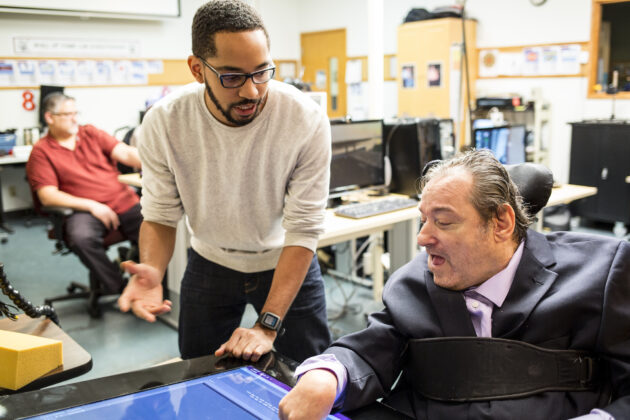Anat Caspi participated in a panel discussion on the future of assistive technology and how recent innovations are likely to affect the lives of people with disabilities.
Category: investors
Accessible CS Education workshop focuses on inclusive experiences
Amid a global pandemic, innovative thinkers have been hard at work developing plans to improve equity in modern learning environments. The Accessible Computer Science Education Fall Workshop was held November 17-19, 2020, and jointly sponsored by Microsoft, The Coleman Institute for Cognitive Disabilities, and CREATE. Each day of the event focused on strategies to improve classroom experiences for students and faculty with disabilities. You can watch recorded sessions where speakers provided a wide range of perspectives on computer science pedagogy…
Caspi to lead collaborative $11.45M Transportation Data Equity Initiative
February 3, 2021 Tools like Google Directions and OneBusAway give up-to-date travel and transit information to make regional transit easier for most. But mobility applications focus on efficiency and shortest paths, leaving out information critical to people with disabilities, older adults, and anybody needing more support. The Taskar Center for Accessible Technology, led by CREATE Associate Director for Translation Anat Caspi, and the UW’s Washington State Transportation Center will work with Microsoft, Google, the Washington Department of Transportation and other…
New UW center bankrolled by Microsoft aims to make technology more accessible to disabled people
The Seattle Times | May 28, 2020 University of Washington professor Jacob Wobbrock figures the best way to make technology more accessible to disabled people is to anticipate their needs from the very beginning. “The world we live in is built on certain assumptions,’’ Wobbrock said. “If we question those assumptions right from the start when we design things, then suddenly things are accessible.’’ The Center for Research and Education on Accessible Technology and Experience (CREATE) is launching with a nine-member,…
Microsoft invests $2.5M in CREATE, a new center for accessible tech at the University of Washington

GeekWire | May 28, 2020 Microsoft and the UW have long been aligned in a shared commitment to accessible technology and a world that is more accessible through technology. With a leadership team from six campus departments in three different colleges, CREATE will build upon the UW’s existing work in education, research and translation. Read the full GeekWire article.
$2.5 million inaugural investment from Microsoft launches CREATE
CREATE News | May 28, 2020UW president Ana Mari Cauce, with Brad Smith, Tim Shriver and Jennifer Mankoff, announced the new center and Microsoft’s investment at the Microsoft Ability Summit on May 28. With a mission to make technology accessible and to make the world accessible through technology, Microsoft’s support will build upon current projects in accessible transportation, augmenting abilities, inclusive design, and “do-it-yourself” technology. The company’s endorsement of the UW’s accessibility work promises to catalyze additional investment, which, ultimately, could…